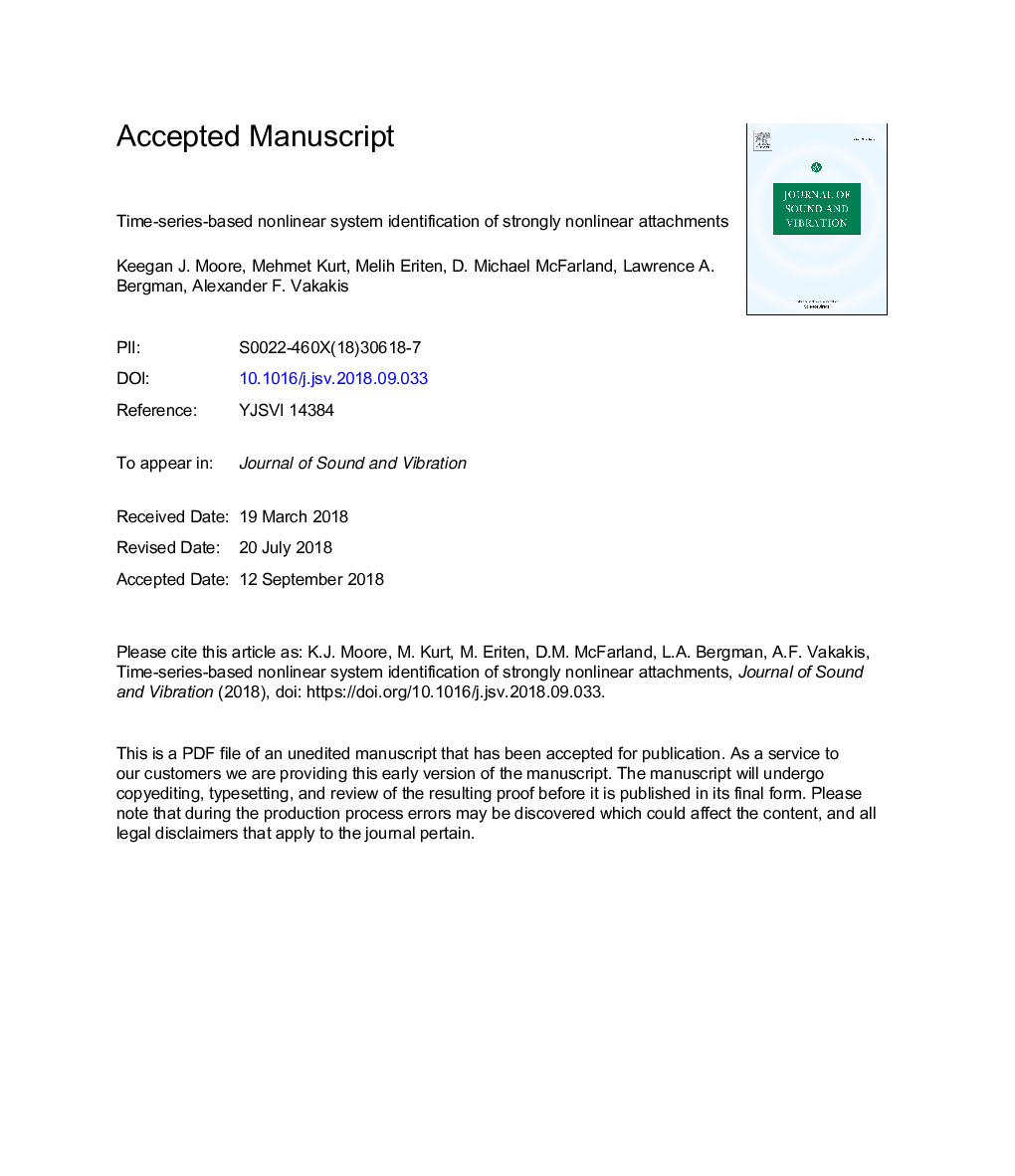| Article ID | Journal | Published Year | Pages | File Type |
|---|---|---|---|---|
| 10225414 | Journal of Sound and Vibration | 2019 | 35 Pages |
Abstract
This work introduces a new nonlinear system identification procedure for identifying the dynamics of an otherwise linear mechanical system augmented by strongly nonlinear local attachments directly from measured transient response data. The method employs the proper orthogonal decomposition to extract energy-dependent proper orthogonal modes from the measured time series. Then, using known linear properties, the characteristic frequencies of the system are estimated by applying the Rayleigh quotient, and an estimated frequency-energy plot (FEP) is created by plotting the characteristic frequencies as functions of the mechanical energy in the system. The estimated FEP directly reveals the presence of strongly nonlinear modal interactions, in the form of non-smooth perturbations (spikes) that result from transient resonance captures between different harmonic components of the measured data. The nonlinearity is identified by plotting the estimated characteristic frequencies as functions of a defined characteristic displacement and fitting a frequency equation based on the model of the nonlinearity. The method is demonstrated computationally and experimentally using the response of a cantilevered model airplane wing with a strongly nonlinear attachment connected to its tip.
Related Topics
Physical Sciences and Engineering
Engineering
Civil and Structural Engineering
Authors
Keegan J. Moore, Mehmet Kurt, Melih Eriten, D. Michael McFarland, Lawrence A. Bergman, Alexander F. Vakakis,
